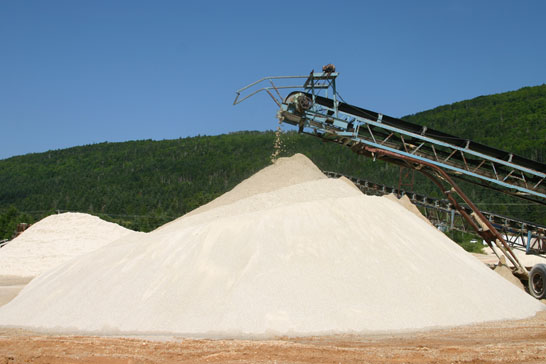When making hydroponic nutrient solutions one of the most important concepts we need to understand is “reagent purity” and how this affects the overall quality and composition of our hydroponic nutrient solutions. People who have not been academically trained in science usually do not have a very good understanding of this concept and its implications and how they need to take it into account when doing their hydroponic formula calculations. HydroBuddy – my free hydroponic nutrient calculator – allows the user to specify the purity of all the reagents used in the preparation of nutrient solutions so that accurate and adequate calculations are done. What does purity mean ? How do you determine the purity of the reagents you want to use ? What does a 100% purity mean ? Keep reading the following few paragraphs to find out.
What is reagent purity ? Imagine that you have 80g of a pure substance – table salt for example – and you mix it up with 20g of sand. The original salt – which was pure – was 100% table salt while the new resulting mixture is only 80% table salt. This degree of presence of a given “pure substance” with a defined composition within a mixture is what we call the “purity” of a reagent. The objective of purity is to know how much of what you are buying actually fits the chemical composition of what you intend to buy and how much is “other stuff”. The nature of impurities -what is different than what you intend to buy – is different depending on the fabrication process and intent of the reagent you want to use. The nature and amount of these impurities may sometimes be very important while other times it can simply be neglected.
People who are not familiar with this concept generally get confused when people start to talk about the composition ratios of pure substances. For example iron EDDHA is an iron complex which contains about 7% iron. This does not mean that EDDHA is only 7% “pure” but it means that within this pure substance iron accounts for 7% of the weight. The purity of the reagent does not have ANYTHING to do with the composition of the pure substance you intend to get – the iron EDDHA in the above example – but it refers to other things that might be present with what you intend to buy due to the fabrication process. So for example you can can buy Iron EDDHA 7% with a purity of 98% which means that from every 100g, 98g are iron EDDHA with a 7% iron content while 2g are made up of other substances with undetermined composition.
In hydroponics we want to provide our plants with the correct amount of nutrients and for this reason we must make sure that we provide what our formulation demands as a minimum. For this reason when preparing hydroponic nutrient solutions we must always use salts with purity levels above 95% with levels above 98% being better. Salts that are 98% pure aren’t very expensive while the purer grades – used for the biochemical and fine chemical industries – are generally several orders of magnitude more expensive. While you can get a calcium nitrate ammonium double salt with a purity of 98% for just a few dollars per kilogram a single kilogram of this chemical at a 99.999% purity (which is often considered analytical grade) would cost around one thousand dollars. This difference in cost arises because as a salt becomes purer, eliminating the small impurities becomes harder and harder. Salts for which extremely high purity levels are achievable (such as NaCl which can be purified to almost 100%) are known in chemistry as “primary standards” because their composition is known to an extremely high degree.
When preparing hydroponic solutions we should not be worried that much about getting very expensive reagents as the impurities we get and the errors we have in our composition are not bound to affect our plants significantly, however we should take them into account so that we know exactly how much of what we know is pure is being added. So even though a reagent may have a purity of 98%, taking into account this will allow us to add enough so that we are certain that at least certain concentration levels are achieved. Of course, using a 100% purity for the reagents is not bound to increase tremendous error if the actual value of the purity of the salts is unknown but making sure that the purity is above 95 or better 98% is always something that should be done to ensure that high quality preparations are being done. You should also understand that the impurities within your salts might actually be insoluble so some small fractions of the salts may remain undissolved when concentrated nutrient solutions are prepared.






